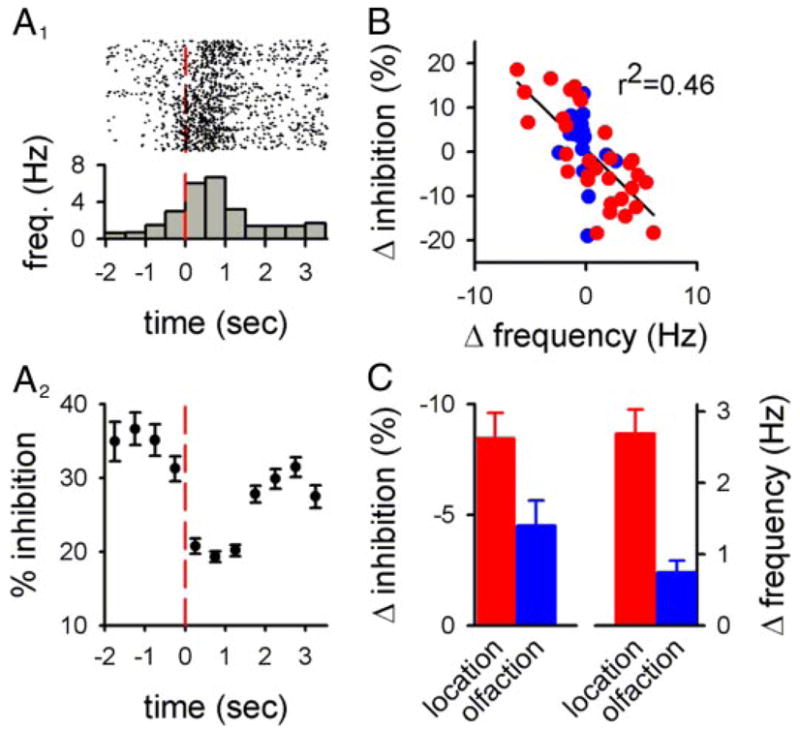FIG. 2.

Presynaptic inhibition is expected to enhance contrast between behaviorally relevant afferent activity and background firing. A: inhibition induced by 3 μM baclofen was calculated as a function of time during the response of a cell to leaving the sample arm (at time = 0) during the delayed nonmatch to sample (DNMS) task. Raster plots for 100 trials are shown (A1, top) as well as the average response to the cue (A1, bottom) and the presynaptic inhibition that was calculated using the ISIs for the spikes in each time bin and the filtering function in Fig. 1A (A2). The contrast between background firing and the neural response in this experiment was calculated as the difference in the appropriate parameter between the 1st 2 time bins and the 2 time bins at the peak of the neural response. B: similar analysis to A was repeated in 53 cells for afferent responses to different cues that were associated with the location of the rat in the maze (red symbols) or with olfactory cues during the task (blue symbols). C: olfactory cues were subject to less inhibition-mediated contrast enhancement than were location-based cues. Both the change in frequency and the change in inhibition were expressed on an absolute scale in C to include responses that were a decrease in frequency.
